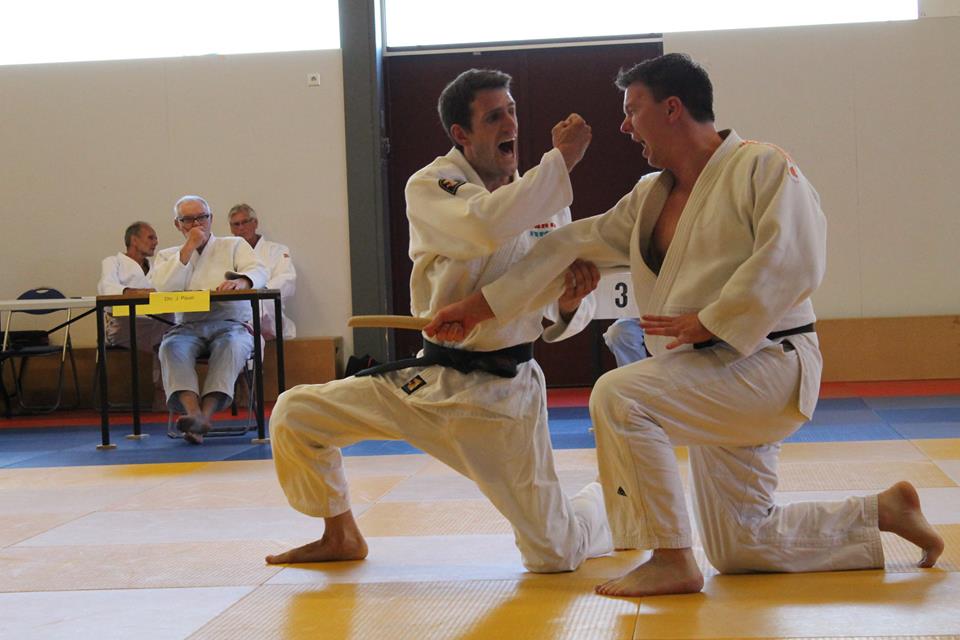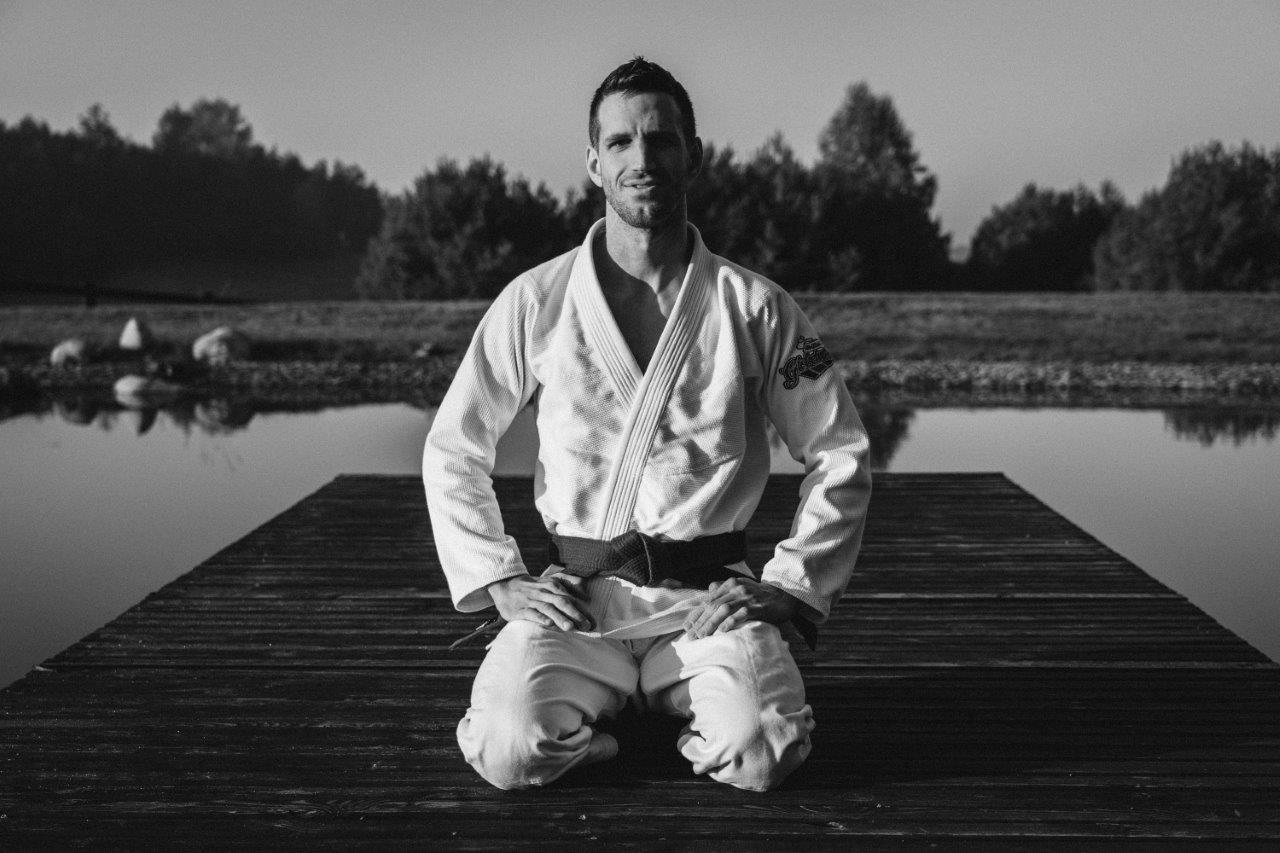Movement in Katame-no-Kata
Blog by Sebastiaan Fransen, 5th dan Judo
This blog addresses a reader’s question regarding why we move the way we do in katame-no-kata. Indeed, the kneeling movements in this kata are quite distinctive, often causing discomfort to judoka due to knee pain and being rarely observed in randori.
Materials from Kodokan
A logical starting point for explanations are the Kodokan’s DVD and textbook. Kodokan, the birthplace of judo, maintains the standards for kata. The textbook provides the following description of the movements:
“Both simultaneously take one step backward with their left feet, kneel down on their left knees on the previous spots of their left heels while keeping their left toes raised. Both move to slide their right feet to their right sides (the lower leg about 90° with the thigh) and put their right palms on their right knees while resting their left hands naturally down. This posture is called Kyoshi or Kurai-dori. Then, Uke moves his right foot inward, takes one step forward with his right foot following on his left knee (Shikko), and moves to slide his right foot to his right side again to adopt the posture of Kyoshi.”
This detailed description covers omote (the visible), clearly stating the technical details of kyoshi or kurai-dori. However, it lacks an explanation of ura, the hidden or underlying principles. This omission is common in many kata resources.
Rarely do resources explain the reasoning behind movements, perhaps understandably. While describing techniques is accessible, exploring kata’s deeper meaning requires extensive research and study, often hindered by romanticized stories and language barriers around original Japanese sources.
Meaning of Kyoshi and Kurai-dori
The Kodokan’s text introduces Japanese terms whose translations might offer insights. Kyoshi (踞姿) translates roughly to “kneeling posture,” and Kurai-dori (位取) means “taking position.” However, these translations offer limited insight.
In “Judo Formal Techniques” (p.120), Kurai-dori is explained differently—as moving in kyoshi using tsugi-ashi. The authors clarify that this movement derives from ancient swordsmanship, where fighters timed powerful strikes from this stable kneeling posture. Jigoro Kano supposedly adopted this position to strengthen legs and hips and enhance lower-body flexibility. Although plausible, the exact source confirming Kano’s intention is unclear.
What is Shikkō?
Shikkō (膝行) means “knee walking.” Common in martial arts like aikido, this kneeling form of movement is more respectful than standing upright, historically used in noble presence or near altars.
Other explanations exist, often romanticized—such as buildings constructed low due to material scarcity or improved visibility for samurai attacks—but these remain anecdotal rather than factual.
Better Explanation of Kyoshi
“Judo Formal Techniques” by Tadao Otaki and Donn F. Draeger elaborates further (p.116-118), emphasizing kyoshi’s stability and its embodiment of calm, silent alertness. Although dignified, it’s strictly a combat posture derived from older martial arts, including swordsmanship and other weapon techniques. This reinforces its historical combat effectiveness.
Kyoshi in Kime-no-kata and Koshiki-no-kata
Kyoshi also appears prominently in kime-no-kata, specifically in techniques like ude-hishigi-waki-gatame and ude-hishigi-hara-gatame. Considering kime-no-kata draws from ancient jūjutsu schools, Otaki and Draeger’s assertion seems accurate. Similarly, in koshiki-no-kata (primarily techniques from Kitō-ryū), kyoshi is frequently used. Even Jigoro Kano is photographed in this posture.

Kyoshi in Tenjin Shin’yō-ryū and Kitō-ryū
Historical texts from Tenjin Shin’yō-ryū and Kitō-ryū showcase various forms of kyoshi, reinforcing the posture’s martial roots and its role in expressing determination, concentration, alertness, and kiai (focused energy). This further validates kyoshi as an essential combat posture with psychological and physical significance.
Conclusion
Drawing definitive conclusions remains challenging. However, it’s evident that kyoshi and tsugi-ashi movements in katame-no-kata derive from traditional jūjutsu schools. The choice of this kneeling posture likely involves etiquette, stability, and mobility advantages over seiza. Kano possibly intended this posture for physical conditioning, aligning with judo’s educational philosophy, though definitive sources remain elusive.
The essential point is judoka’s use of kyoshi with calmness and silent alertness, enhancing zanshin (remaining awareness), fundamental in kata study. Thus, next time studying katame-no-kata, strive to embody determination, concentration, alertness, and kiai through kyoshi.
I welcome your thoughts and experiences. If you have confirming or contrasting sources, please share them with the judo community. Lastly, my gratitude again goes to Loek van Kooten for his diligent research and Japanese translations.
